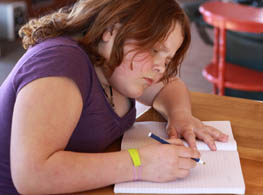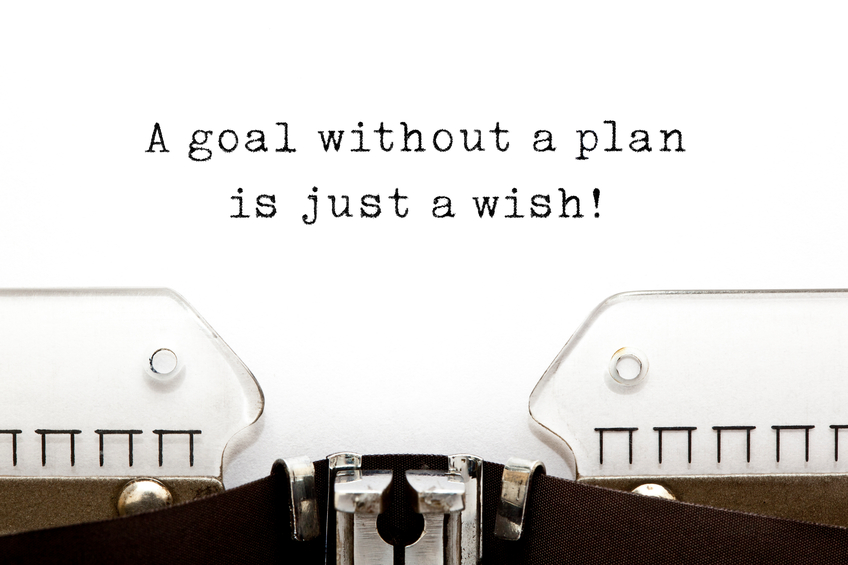 |
BlubberBusters Tips
from Lucy (Click here for past week's tips) |
||||||||||||||||||||||||||||||||||||||||||||||||||||||
A 3 WAY APPROACH TO WEIGHT LOSS - STEP TWO -ELIMINATE SNACKINGNow the you have completed STEP ONE: Eliminate Problem Foods (those foods you have difficulty avoiding) for at least ten days, you are ready to begin Step Two: Eliminate Snacking.
Typically, snacking is eating whatever is available, rather than a particular food. If you eat three normal meals a day, you really don’t need to snack between meals. It’s much easier to cut down on amounts at meals, if you can avoid the see-saw effect of eating more between meals. Always avoid skipping a meal, or you may be tempted to snack before the next meal or overeat at the next meal. THE GOAL: Avoiding all snacking between meals so you are eating only at mealtime. Ready? Let's begin! 1. It's a good idea to review your food diary if you kept one to note the times of day and frequency that you tend to snack. Which times (morning, afternoon, evening or nighttime) tend to be the most difficult for you to avoid snacking? 2. Start by selecting one or more time periods to abstain from snacking (morning, afternoon, evening, or nighttime). It's a good idea to start with the time period that is the least difficult so you can be successful and gain confidence before moving on to another time period. 3. Identify and list your snacking triggers or cues- (what always happens right before snacking occurs) like going into the kitchen or feeling bored. AVOIDING YOUR SNACKING TRIGGERS IS THE MOST EFFECTIVE METHOD OF ELIMINATING SNACKING. 4. Write a plan to avoid each trigger(s). For example, if every time you go into the kitchen you end up snacking, going into the kitchen is your trigger. Your plan should be to do a distraction like play some music to relax so you avoid going into the kitchen. Armed with a plan, you will be more successful in avoiding snacking. Remember, it is much easier to avoid your snacking triggers when the food is NOT in front of you. 
5. Keep track each day of your progress. If you can't resist, don't fret. Dust yourself off and start again the next day. It helps to keep track of the days you've been able to avoid the snacking period by recording in your notebook. If you snacked, what did you snack on? What triggered the snacking? Make a plan to avoid the trigger so you will know what to do instead of snack in case the trigger happens again. Click here to print out the below Snacking Elimination Chart and use one for each snacking time period.
6. Once you've been able to avoid snacking and resist urges during a time period for at least ten (10) or more days, that time period is considered in control. You can now start on the next snacking time period you wish to avoid. Continue as above until all snacking time periods are in control. This might take several weeks so BE PATIENT!! CAUTION: WHEN AVOIDING SNACKING DURING ONE TIME PERIOD, DON'T SNACK MORE DURING THE OTHER SNACKING TIME PERIODS!

1. TV/Computer Snacking. It's not a good idea to just sit and watch TV. Plan: Work on a project, hobby, or anything that involves doing something active, such as drawing pictures, doing needlepoint, cleaning your room, or walking on a treadmill to keep yourself distracted. Don't keep food near the computer or TV. Remember, out of sight, out of mind. 2. Arriving Home Snacking. Often times when we arrive home from school, work, sports, or any event, we tend to immediately head for the kitchen for a snack. This is likely because we are still “wired” from the event or stress of the day and want something to munch on to get rid of nervous energy or distract us from stresses of the day. (This is similar to a race horse coming across the finish line. Trainers keep race horses running for a while after crossing the finish line and only gradually slow them down. If they abruptly stop, the horses become quite agitated and may bite each other or the trainers.) Similar to race horses at the end of a race, it is helpful to engage in some type of winding down activity when we arrive home, something to calm and relax our emotional brain. It helps to do something, not just sit. Plan: Do something to keep busy when you arrive home. For example, hang out with a friend, shoot basketball, take a walk with your dog, listen to music, or work on a hobby. Some kids find starting some of their homework right away helps them to calm down without eating. Above all, stay out of the kitchen. 
3. Boredom Snacking. Being bored is common and typically happens on weekends and during vacations especially when in the house alone. (Boredom may actually be mislabeled anxiety, loneliness, or depression, as being bored is more socially acceptable than being anxious or depressed.) When there is nothing to do, this lack of stimulation is unpleasant, so we may turn to food to relieve it. Usually foods requiring motor action are preferred such as chewy, crunchy foods like chips, cookies, or nuts. Plan: To avoid snacking when bored, plan fun activities to distract yourself from food, like non-competitive sports, hikes, clubs, hobbies, and musical instruments. Try not to be in the house alone. Get together with a friend or go out and do something. 4. Nervous Snacking. When we are nervous, anxious, or tense such as from school, a job, or family problems, our emotional brain wants us to munch and chew on something, similar to biting our fingernails. This expends nervous energy in the brain, relieves tension, and also distracts from the stressful situation. Plan: To avoid nervous snacking, do something else to deal with your nervousness, anxiety, and tension. Things that help reduce nervousness when tempted to eat are the following: - Squeeze your hands together tight. This releases nervous energy and tension and also keeps your hands from reaching for food. - Take a deep breath, hold it for a second or two, and then let it out. Repeat this. -Write down the things you are worried about, and then write a plan for dealing with each worry. It's amazing how worries are lighter when we have a plan to solve them in place. 5. Night Snacking. Night snacking or night bingeing usually results from feeling lonely or stressed from the day or not being able to sleep. Night snacking may happen in secret, after the rest of the family has gone to sleep. Plan: Things that help avoid night snacking are the following: - Brush and floss your teeth immediately after dinner. - Do not watch TV before going to bed. Instead, read, listen to relaxing music, or write about your day or your problems and a plan for each problem in your notebook. Writing out how you feel and making a plan can have a very calming effect and help you relax. - Sleep: If getting to sleep is a problem, say to yourself: “no thoughts, just rest” and “night thoughts are not right thoughts.” Think about a positive thing that has happened to you, even a year ago, like appreciation from someone you helped. Feel how good it feels to rest each part of your body, starting at your toes and working up your body. Remember that just completely relaxing each part of your body is almost as good as sleep. 6. Comfort and Binge Eating. Comfort snacking or comfort eating is using food to make yourself feel better when sad or upset, very much like a form of self-medication. Snacking on sweet, soothing foods, like ice cream, cake, or chocolate, is a sign of comfort snacking. You may be comfort eating mindlessly. Plan: Think up other comforting or distracting things to do when sad, instead of eating, such as call a friend, hang out with a pet, or volunteer at a soup kitchen or animal shelter.
1. Relaxing Music. Soft music that has a slower beat tends to reduce stress and
stress snacking. 2. Distress Tolerance. URGE SURFING. 3. Rubber Band Method. It is possible to stop the emotional brain by snapping a rubber band against the wrist each time you find yourself wanting to snack. Put a rubber band around the wrist snuggly but not tight. A fairly heavy rubber band should be used, so it does produce a bit of a sting when snapped against the wrist. Plan: When you find yourself headed for the kitchen or fridge to get a snack, snap the rubber band against your wrist while focusing on the urge to snack. The jolt interrupts your snacking thoughts. Once this has been practiced a few times, simply wearing the rubber band on the wrist and looking at it in the moment can prevent snacking from occurring.
Let us know what you think of this tip. Make this a healthy week! (Click here for past week's tips) |
|||||||||||||||||||||||||||||||||||||||||||||||||||||||
Please ask your
healthcare provider if these tips are right for you and please read our disclaimer.
 This is an important step! Remember, each trigger should have a plan in place. That way when something sets off a "snack attack," you'll have a plan to avoid the "snack attack" already in place.
This is an important step! Remember, each trigger should have a plan in place. That way when something sets off a "snack attack," you'll have a plan to avoid the "snack attack" already in place. If you experience stress (and find yourself snacking due to this emotion), find several songs to play when you need to wind-down and just RELAX. You can also look at a picture of some relaxing scene, such as a waterfall, while listening to the relaxing music. Close your eyes and imagine the beautiful scene. Voilà!
If you experience stress (and find yourself snacking due to this emotion), find several songs to play when you need to wind-down and just RELAX. You can also look at a picture of some relaxing scene, such as a waterfall, while listening to the relaxing music. Close your eyes and imagine the beautiful scene. Voilà! Let a bothersome urge to eat roll over you like a WAVE~~~~~~. Pause, feel, and be aware of your urge. RELAX, and “SURF” your urge, but without acting on it. Take a risk that you may be hungry or miss the comfort of the food, but that you'll be okay. Breath in deeply, hold in for a few seconds, then let your breath out. Distract yourself and go about your life. It will get better. See, it's works!
Let a bothersome urge to eat roll over you like a WAVE~~~~~~. Pause, feel, and be aware of your urge. RELAX, and “SURF” your urge, but without acting on it. Take a risk that you may be hungry or miss the comfort of the food, but that you'll be okay. Breath in deeply, hold in for a few seconds, then let your breath out. Distract yourself and go about your life. It will get better. See, it's works!